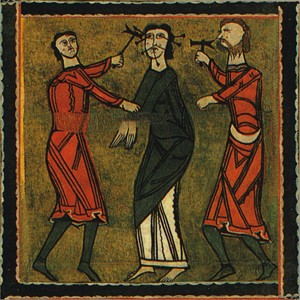
Typical early Christian ear-training session.
Besides the paper mentioned above, I’ve also included a download of some ear-training exercises and drills I’ve developed over the years. Even though it’s much better and more satisfying to do actual music, as opposed to exercises and “ear-training” melodies, there’s clearly a lot to be gained by sharpening one’s specific skills in a more controlled, abstract context. To that end, this file contains 125 drills of various types, written first in solfa notation, without a staff, and then in regular notation. Each drill promotes either the development of fluency in articulating the solfa syllables or else the control of the imagination — the famous “inner ear” we’ve all heard so much about — as a sort of “overseer” of the cognitive processes involved in singing accurately and in tune. Hours of fun (or something), guaranteed. If you have questions, you can always email me.
| Downloads | |
|---|---|
| “Movable do” | click here |
| Solfa Exercises for Fluency and Flexibility CDN $10.00 |
click here |
Hey Art, love your work and, by the way, the items I’ve purchased from your site have proven really helpful. I have a question about performance of Bach’s chorales: If one has a keyboard score for a chorale with the words included (English and/or German) is there a primary ‘line’ the words should follow i.e. the soprano line? If so, how should those same words/syllables be sung in the other voices which usually have additional/different notes & elaboration? Is there, in effect, a vocal score for each different part that just happens to use the same words? It’s just not like harmonization in a pop song, or lock step part singing in a, say, Jehovah’s Witness worship, is it? I’m using the ‘Brilliant Classics, Matt Nicol & Chamber Choir of Europe’ recording of the complete chorales which is wonderful but has gotten me thinking; listening to the human voices (basically unaccompanied) as opposed to the piano voices I play was a revelation!